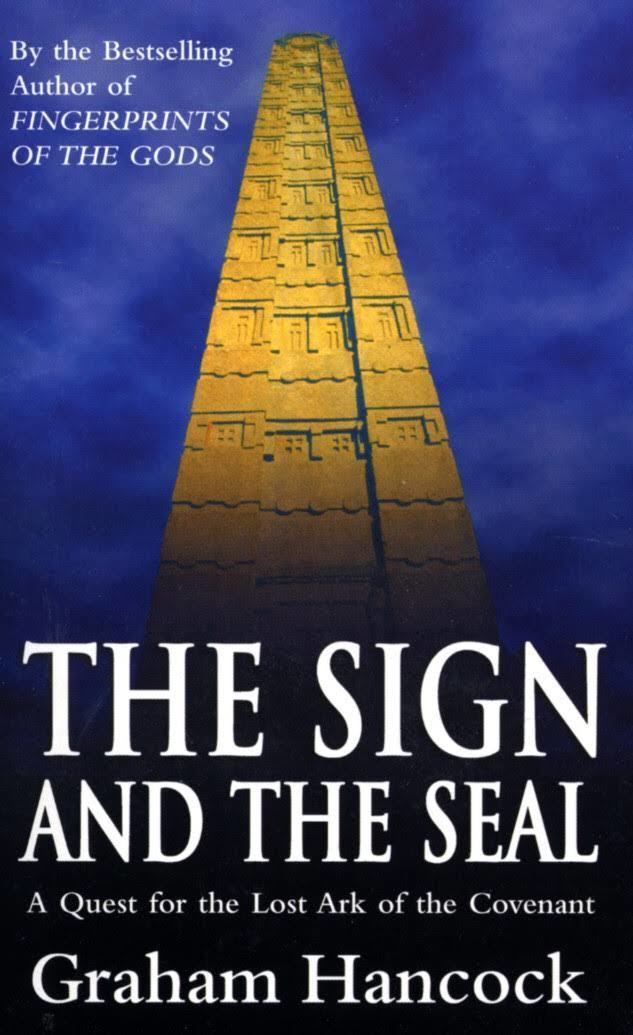7.8 /10 1 Votes7.8
Language English Pages 600 Originally published 1992 Page count 600 OCLC 65797265 | 3.9/5 Goodreads Subject History ISBN 978-0-434-31333-4 Genre Sociology | |||||||||||||||||||||||||||||||||
 | ||||||||||||||||||||||||||||||||||
Similar Graham Hancock books, Sociology books, Antiquities books | ||||||||||||||||||||||||||||||||||
The Sign and the Seal: The Quest for the Lost Ark of the Covenant is a controversial book by British researcher Graham Hancock. It was published in 1992. The book narrates the endeavours of the writer in searching for the Ark of the Covenant and proposes a theory of its historical movements and current whereabouts.
Contents
Summary
Hancock proposes the theory that the ark was removed from Solomon's Temple in Jerusalem by temple priests during the reign of the evil King Manasseh of Judah around 650 BC, and then it spent about 200 years in a purpose-built temple in Elephantine, Egypt before it was removed around 470 BC to Ethiopia via tributaries to the Nile River, where it was kept on the Jewish island of Tana Qirqos for about eight hundred more years as the center of a strong Jewish community there, before it finally came into the hands of the young Ethiopian Orthodox Church in the 5th century, who took it to their capital of Axum, and it supposedly remains there until today in the Church of Our Lady Mary of Zion. The Ethiopian Church believes that the Ark is indeed held today in the Church of Our Lady Mary of Zion, but as opposed to the book, they believe that it was brought to Ethiopia by Menelik I, stolen from Solomon's Temple during the reign of King Solomon himself, some 200 years earlier than the events proposed by the book.
The book also claims that the Holy Grail is none other than the Ark of the Covenant itself.
The book also claims that the Knights Templar searched for the lost Ark of the Covenant at the site of the Temple Mount in Jerusalem in the 13th century, until they apparently figured out that the Ark was in Ethiopia, so they then sent a contingent there apparently with the goal of acquiring it. The Ethiopian Church, apparently fearful of losing the Ark to the Knights Templar, sent emissaries in 1306 to Pope Clement V; the Catholic Church's fear of the Knights Templar acquiring the power of the Ark of the Covenant, the book claims, is one of the reasons why Pope Clement V began prosecution and arrest of the Knights Templar in 1307.
Reception
The book sold well, but received negative reviews from critics. Jonathan Kirsch of the Los Angeles Times wrote, "It's part travelogue, part true-adventure, part mystery-thriller. But mostly it's a whacking big dose of amateur scholarship alloyed with a fervid imagination and the kind of narrative that comes in handy when telling ghost stories around a campfire." Desmond Ryan of the Philadelphia Inquirer joked, "If [Hancock] did any more speculating than what is strewn through the many pages of The Sign and the Seal, he would have to go into real estate." Archaeologist John Holladay of the University of Toronto called it "garbage and hogwash," while Edward Ullendorff, a former Professor of Ethiopian Studies at the University of London, said he "wasted a lot of time reading it." Richard Furlong described the book as "a thoroughly engaging read, written in an easy-to-follow, breathless style by someone who is absorbed by his task. Highly recommended for conspiracy fans; unsuitable for historians and archaeologists."
